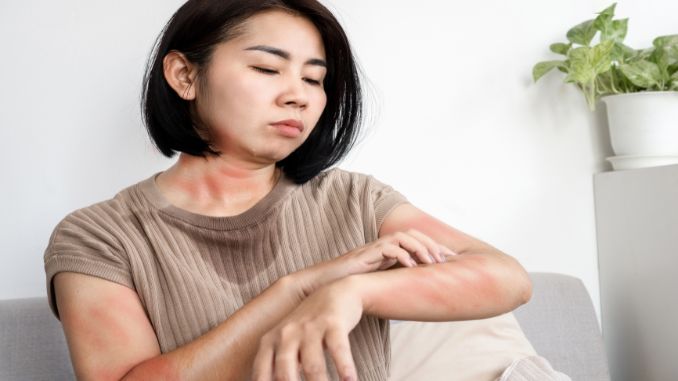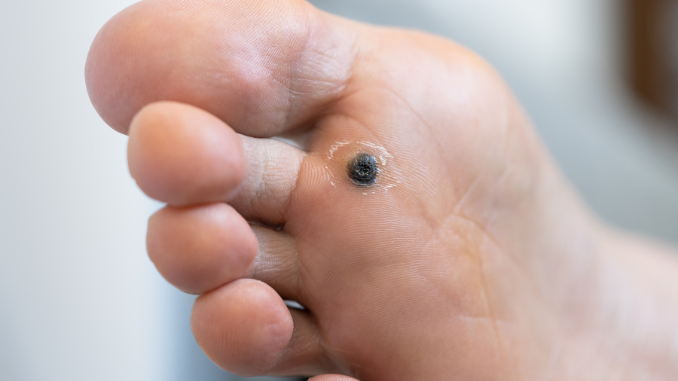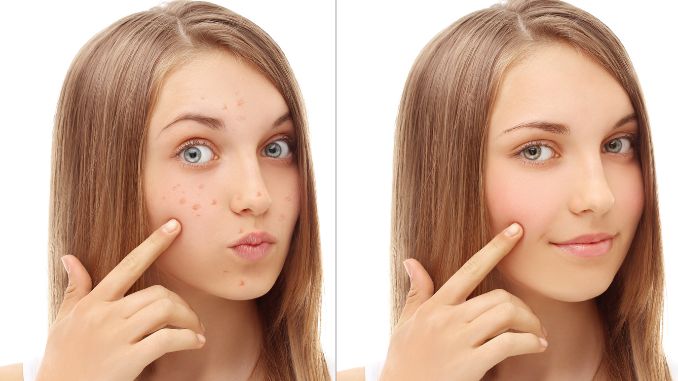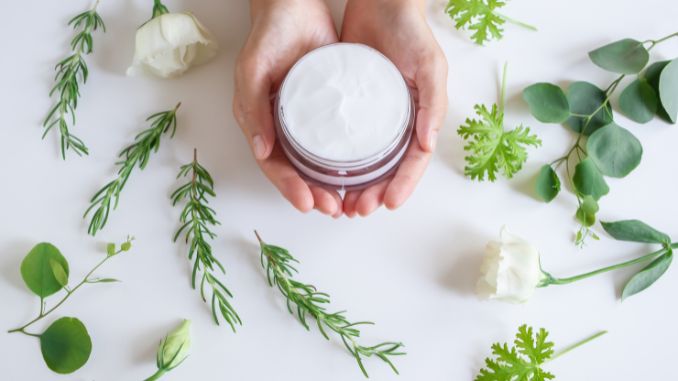Step into a guide designed to understand the two most common skin reactions ever, providing insights to help experts and the inexperienced differentiate between hives vs rash.
In this guide, we'll unravel the visual cues of hives vs rash skin reactions and delve into the factors that make them fascinating and something you can navigate confidently.
Join us on this journey, where we aim to not only navigate the intricacies but also equip you with the knowledge to care for your skin effectively.
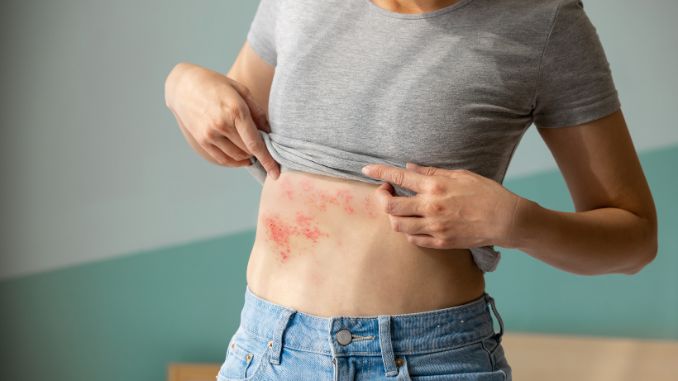
What are Hives and Rashes?
Hives Vs Rash: Hives are a type of skin condition characterized by the sudden onset of raised, itchy welts or wheals on the skin. These welts can vary in size and shape, appearing as red, swollen bumps that often change rapidly and may merge.
Moreover, skin rashes are dermatological conditions characterized by a visible alteration in the skin's color, texture, or appearance. Moreover, they manifest as red, swollen, or irritated areas, often accompanied by itching or discomfort. Rashes can result from diverse factors, making them a symptom rather than a specific diagnosis.
Causes and Triggers for Rash
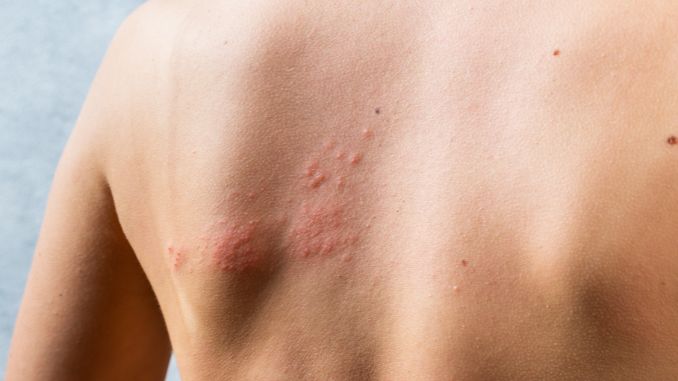
Rashes can result from diverse factors, making them a symptom rather than a specific diagnosis. Moreover, allergies to substances like certain foods, medications, environmental elements. Even an insect bite can trigger allergic rashes. At the same time, infections caused by bacteria, viruses, or fungi may lead to infectious rashes.
Furthermore, contact with irritants or allergens, autoimmune disorders, stress, insect bites, and heat exposure can also contribute to the development of rashes. Moreover, the appearance of rashes varies widely, ranging from small, raised bumps to larger, patchy areas.
Hives
Hives occur when certain cells in the skin discharge histamine and other chemicals into the bloodstream. Showing the distinguishing redness and swelling associated with this condition. Moreover, common triggers for hives include stress, allergic reactions to foods, medications, insect stings, infections, or physical factors like sun exposure.
Mild hives and other rashes may just be simple skin irritation. While more severe cases will take more than six weeks to heal. Additionally, to know the severity of your current condition, consider talking to a professional to diagnose hives or rashes properly.
Different Types of Rashes and Hives
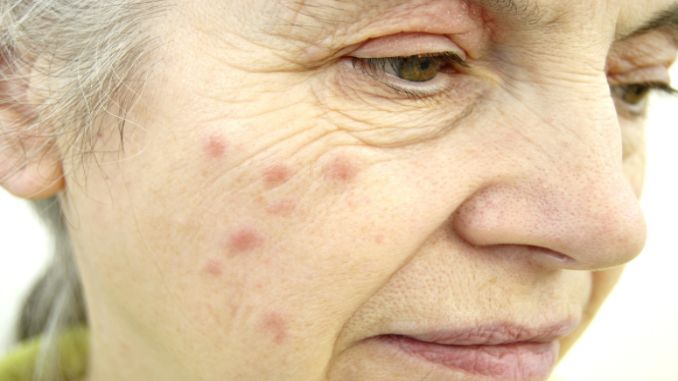
Hives vs rash, all have different types, each with its own sets' own problems. Moreover, recognizing these types is crucial for accurate diagnosis and tailored treatment, emphasizing the intricate diversity of skin reactions.
A. Hives
- Acute Urticaria - An onset of physical hives that disappear quickly, often triggered by allergens or certain medications. moreover, tese hives are typically resolved within a few hours to a few days.
- Chronic Urticaria - Acute Hives that persist for six weeks or longer, and the cause may be more challenging to identify. Chronic urticaria is associated with autoimmune or systemic conditions.
Physical Urticaria - Hives triggered by physical stimuli like pressure, cold, heat, or sunlight. Moroever, this type of hives develops in response to specific environmental factors.
Aquagenic Urticaria - A rare condition where hives tend to develop in response to water, regardless of their temperature. This includes contact with rain, sweat, or contaminated water.
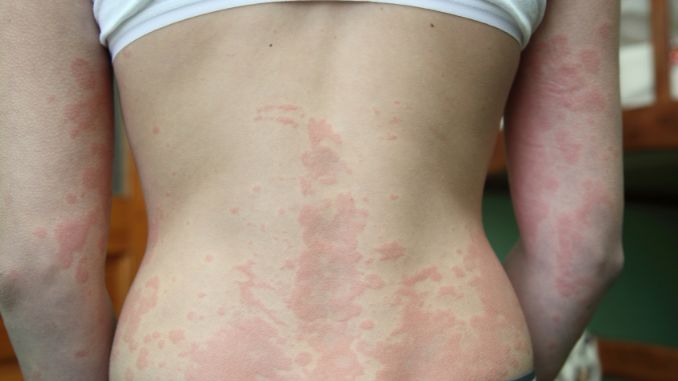
Contact Urticaria - Hives triggered by direct contact with the irritant, such as certain plants, animals, or substances. These can be easily identified with an allergy test, with slight exposure.
Dermatographias - A form of physical urticaria where raised welts appear on the skin in response to pressure or friction. The welts often mimic the pattern of the pressure applied.
Vibratory Angioedema - Chronic Hives accompanied by deep, painful swelling in response to constant vibrating or mechanical stimuli. Severe cases may result in difficulty of breathing.
Hereditary Angioedema (HAE) - Hives are known for severe swelling. Allergies do not cause this but swell various body parts, similar to an allergic reaction.
Idiopathic Urticaria - Chronic hives without an identifiable cause, making it challenging to determine the specific trigger.
B. Rash
Contact Dermatitis - This rash occurs due to exposure to irritants or allergens, resulting in redness, itching, and occasionally blistering, as seen with substances like poison ivy or specific chemicals.
Atopic Dermatitis (Eczema) - Atopic dermatitis is characterized by inflamed, itchy skin. Eczema often occurs in individuals with a personal or family history of allergies.
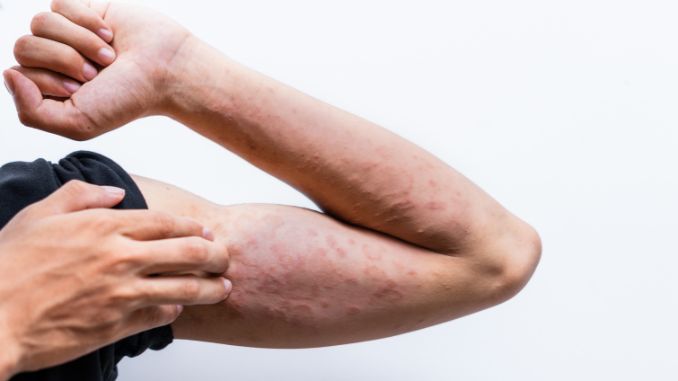
Allergic Dermatitis - Skin reaction to allergens, resulting in redness, itching, and sometimes swelling. Certain foods, medications, pets, or pet dander can cause these allergies.
Heat Rash (Miliaria) - This is a type of rash that results from blocked sweat ducts, leading to red, itchy bumps. This type of skin rash is common in hot and humid conditions.
Psoriasis - An autoimmune condition causing rapid skin cells to grow over one another, resulting in raised, red, and scaly patches.
Ringworm (Tinea) - It is a type of rash caused by fungi that can impact different areas of the body, resulting in circular, red, and itchy patches.
Impetigo - A type of rash caused by a bacterial infection characterized by red sores or blisters that may ooze and form a yellowish crust.
Shingles (Herpes Zoster) - Caused by the reactivation of the chickenpox virus, leading to a severe pain rash with fluid-filled blisters.
Difference Between the Skin Conditions
1. Appearance
The sudden formation of raised red welts on the affected skin characterizes hives. These welts are followed by an intense itching sensation and vary in size and shape, changing rapidly through exposure and stimuli.
Furthermore, unlike most rashes, the fleeting nature of hives distinguishes them, as the raised welts may appear and disappear in different areas of the skin over a short period. This dynamic, transient quality and pronounced itchiness sets hives apart as a distinctive and visually striking skin reaction.
Unlike hives, rashes encompass diverse skin alterations, constituting a broad spectrum of visual manifestations. Moreover, the term "rash" serves as a collective descriptor for various skin changes, including redness, raised bumps, blisters, or alterations in skin texture.
Moreover, the appearance of a rash is intricately linked to its underlying cause, resulting in a wide array of visual characteristics. For instance, an allergic reaction may manifest as red, raised bumps, while a viral infection could present as small, fluid-filled blisters.
2. Duration
Hives typically manifest immediately and are characterized by their appearances lasting from a few hours to a few days. In the case of chronic hives, the condition may persist for weeks or even months.
The duration of a rash varies based on what caused it. Certain types of skin rash will exhibit an acute pattern, resolving quickly. Moreover, others take on a chronic nature, enduring for an extended period.
3. Cause
Hives are generally triggered via allergic reactions to foods, medications, insect stings, infections, stress, or physical factors like heat. Moreover, acute hives are a type of skin condition that an allergic reaction can cause, infections (viral or fungal infection), contact with irritants or allergens, autoimmune conditions, or other underlying diseases.
Rashes can result from diverse causes, including allergic reactions to substances like foods or medications, infections, and contact with irritants such as poison ivy. Depending on the type of rash and the cause. Moreover, a severe allergic reaction may require medical treatment.
4. Pattern
Hives exhibit a transient and migratory nature, characterized by their tendency to appear and disappear across different areas of the skin. As a result the emergence of hives lacks distinct patterns.
The pattern of rashes can vary significantly, contingent upon the specific type. While some rashes may be localized to particular areas. Moreover, others may extend more broadly across the skin.
5. Hatching
When individuals develop hives, they are usually directly causing persistent itching, caused by underlying diseases or persistent itching of the affected area.
In the case of rashes, itching can stem from an underlying disease or result from the rash itself. Additionally, the intensity and character of itching can vary widely depending on the specific underlying conditions.
6. Persistence
Acute hives may either resolve spontaneously or respond to antihistamine treatment. Whereas managing chronic hives often necessitates identifying and addressing underlying causes.
The approach to treating these skin conditions is contingent upon the specific type. Emphasizing the importance of accurate diagnosis for targeted and effective management.
Treatment Approaches
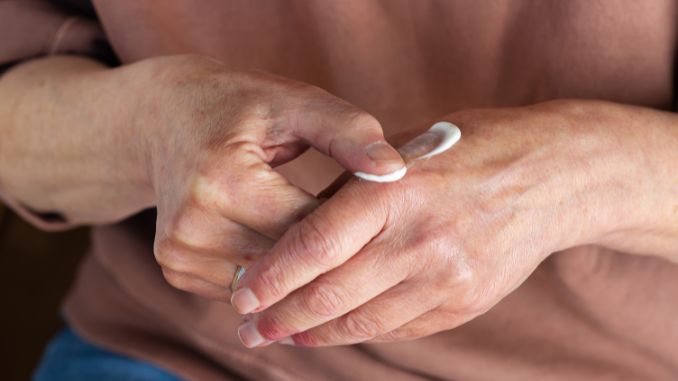
1. Anti-Itch Creams or Lotions
Anti-itch creams or lotions help relieve itching from skin reactions such as hives and rashes. Moreover, these topical formulations, often infused with soothing ingredients like calamine or menthol. It can relieve itching and defend against the constant itchy sensation accompanying hives vs a rash.
2. Cold Compress
Cold compresses provide more than just relief. They emerge as a simple yet effective strategy for managing the discomfort associated with skin reactions such as hives and rashes. The application of cool compresses helps to constrict blood vessels, slows the blood pressure to the affected site, and curbing inflammation.
3. Moisturizers

Keeping the skin well-hydrated with moisturizers can help manage dryness and discomfort associated with chronic hives and other rashes. Moisturizers also help in alleviating itchiness by gently massaging the moisturizer onto the affected areas. It can enhance blood circulation, promoting a sense of relief.
4. Antibacterial Medications
Antibacterial and allergy medications range from topical creams to oral antibiotics, which target bacterial infections by destroying the bacteria at the site of skin rashes. Also, which should help treat hives and reduce itching sensations. These over-the-counter medications help by removing itchiness and pain and preventing the spread of the infection to other areas.
5. Immunosuppressant Medications
In cases of chronic or severe hives or rashes, where other treatments have not been effective, immunosuppressant medications may be prescribed to modulate the immune system and reduce inflammation. It dampens the hyperactive immune system responsible for prolonged inflammation and persistent symptoms.
Moreover, all treatment options here should be cautiously applied to your medical conditions. If you are having difficulty in how to manage symptoms you can seek medical treatment immediately.
Should other symptoms persist, seeing a doctor promptly to seek emergency care is crucial. Get yourself a physical examination from a medical professional to know if there are other concerning symptoms.
Conclusion
Hives vs Rash: Understanding skin reactions helps distinguish between hives and rashes, guiding appropriate actions. Moreover, differentiating between them is pivotal for effective treatment—whether it's the rapid evolution of hives or the diverse manifestations of rashes, identifying triggers is key.
This comprehensive overview underscores the importance of informed care. Advocating tailored approaches to address each reaction's unique traits. Learning the disparities between "Hives and Rashes" empowers us to take charge of our health and equips us with the ability to handle such issues effectively. Recognizing these conditions helps narrow down the appropriate solutions when encountering them.
Explore the differences between hives and rashes for better understanding and management. Check out our Anti-Inflammatory Cookbook for additional tips on promoting skin health and overall well-being.

